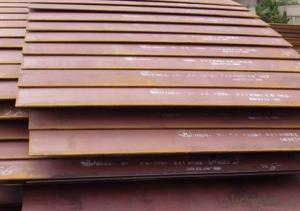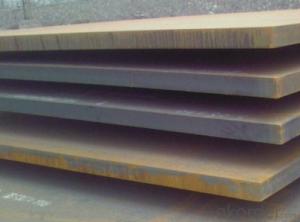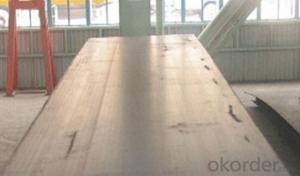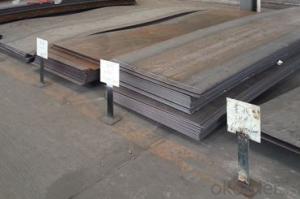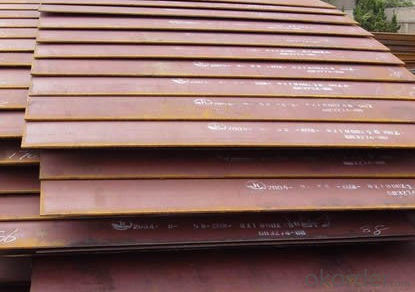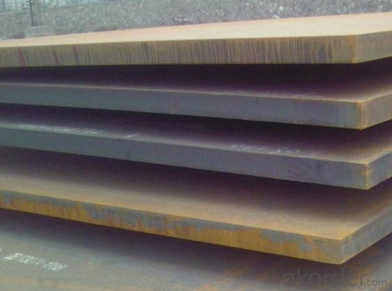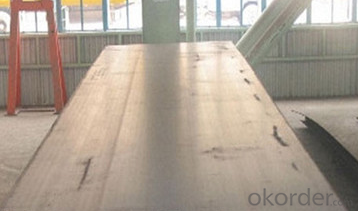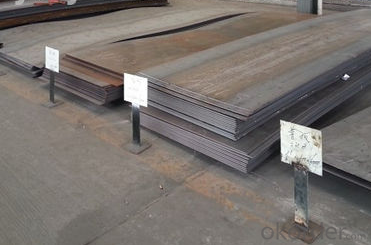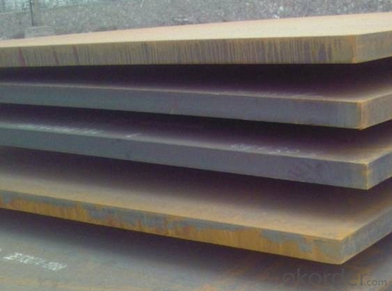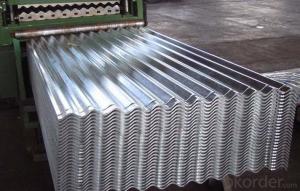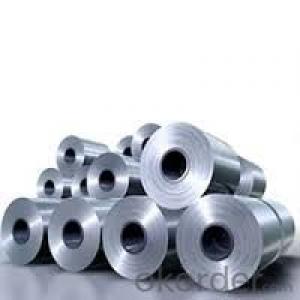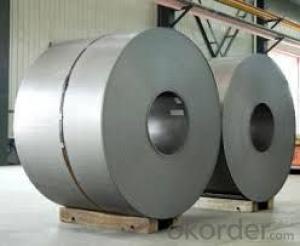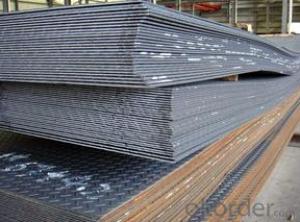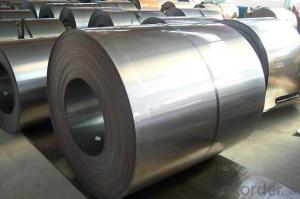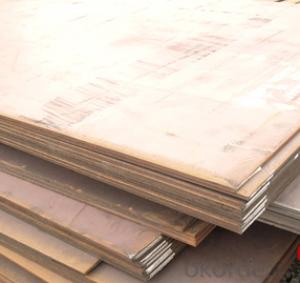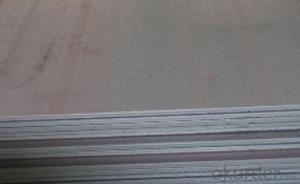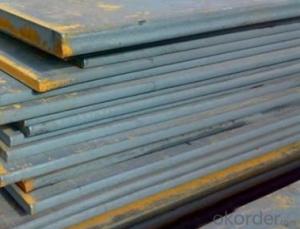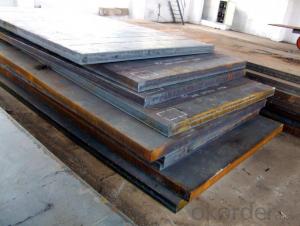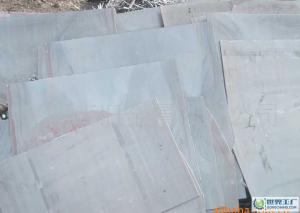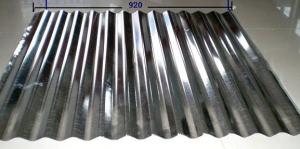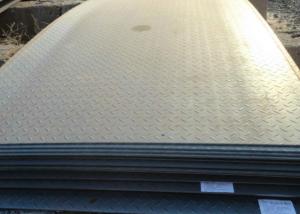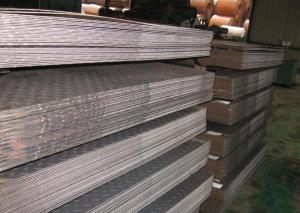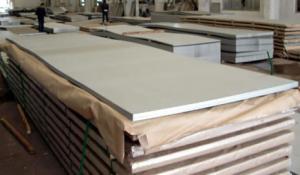Cold Rolled 304L Stainless Steel Sheet CNBM
- Loading Port:
- Qingdao
- Payment Terms:
- TT OR LC
- Min Order Qty:
- 10 pc
- Supply Capability:
- 30 pc/month
OKorder Service Pledge
OKorder Financial Service
You Might Also Like
Quick Details
| Grade: | stainless steel sheet | Standard: | JIS, AISI, ASTM, GB, EN | Length: | 1000-6000mm |
| Thickness: | 0.3-6.0mm cold rolled | Width: | 500-2000mm | ||
| Brand Name: | TISCO | Model Number: | 304 | Type: | stainless steel sheet |
| Application: | construction,decration,foodstuff, gas, metallurgy,biology,chemical,etc | Certification: | SGS | cold rolled finish: | 2B ,BA,Hairline ( brush),No.4 ,8k Mirror |
| hot rolled finish: | No.1 | edge: | raw/mill edge , slit edge | packing: | wooden pallet ,standar export packing |
| inner packing: | interleaving paper | mill test: | quality certification | Inspection: | accept customer inspect |
| Delivery time: | within 5 working days of the stocked grade | Payment term: | T/T or L/C | Quality: | primary quality |
Packaging & Delivery
| Packaging Details: | The packing of 304 steel sheet is wooden packaging;kraft;standard export packaging. |
| Delivery Detail: | The delivery time of 304 steel sheet is within 5 working days |
Specifications
Stainless steel sheet
1.Thickness:0.3-100mm
2.Width:500-3000mm
3.Length:1000-6000mm
4.large stock,short delivery time
Product Description
cold rolled 304 stainless steel sheet
We are suppliers of 304 and 304L Stainless Steel in a wide range of bar, flat, sheet, plate, angle and seamless tubing and pipes.
Stainless steel types 304 and 304L.Type 304 stainless steel material is a kind of common stainless steel materials, corrosion prevention is better than 200 series stainless steel materials. High resistance to high temperature also is better, can to 1000-1
200 degrees. 304 stainless steel has good corrosion and corrosion resistance and good resistance to intergranular corrosion. For oxidizing acid, obtained in the experiment, the concentration of 65% or less under the boiling temperature of nitric acid, 304
stainless steel has a strong corrosion resistance. To most organic and inorganic acid and alkali solution with good corrosion resistance ability.
All stainless stock can be delivered mirror polished if required, Call for details.
Chemistry Data For 304/304L Stainless Steel
304 Stainless Steel | |||||||
Carbon (C) | Manganese (Mn) | Silicon(Si) | Chromium (Cr) | Nickel(Ni) | Phosphorus (P) | Sulfur (S) | Other |
0.08 | 2.0 | 1.0 | 18.00-20.00 | 10.0-14.0 | 0.045 | 0.03 | - |
304L Stainless Steel | |||||||
Carbon (C) | Manganese (Mn) | Silicon(Si) | Chromium (Cr) | Nickel(Ni) | Phosphorus (P) | Sulfur (S) | Other |
0.03 | 2.0 | 1.0 | 17.00-19.00 | 8.0-10.5 | 0.035 | 0.03 | - |
(a) Iron constitutes the remainder. Amounts indicated are maximums or ranges, unless indicated.
Mechanical Data for 304/304L Stainless Steel
Stainless Steel Type | Minimum Tensile Strength (ksi) | Minimum Yield Strength (0.2%, ksi) | Hardnessb |
304 Stainless Steel - Typical Valuesc | 75 | 30 | 88 |
304L Stainless Steel - Typical Valuesc | 70 | 25 | 88 |
- Q: What kind of material does ordinary steel plate refer to in steel market?
- Wear resistance and special electromagnetic properties, carbon steel in this respect is relatively poor, because in the manufacture of this kind of steel plate, often to maintain good toughness, so we reduced the iron element to join. Not as a result of the steel sheet in abrasion resistance and special electromagnetic aspects is very weak, but the alloy plate is different because adding other alloying elements, which makes the original in iron deficiency situation has been greatly improved this is better for some special requirements of customers.
- Q: What is the difference between a smooth and embossed steel sheet?
- A smooth steel sheet is characterized by its flat and uniform surface, lacking any textures or patterns. It is typically produced by rolling the steel through a series of rollers to achieve a sleek and even finish. Smooth steel sheets are commonly utilized in industries where a seamless and polished appearance is desired, such as in architectural and interior design, automotive manufacturing, and appliance production. On the other hand, an embossed steel sheet possesses a textured or patterned surface. This texture is created by pressing the steel sheet between embossing rollers, which imprint a design onto the surface. The embossed pattern can take various shapes, including diamonds, squares, or waves, and it adds a decorative and tactile element to the sheet. Embossed steel sheets are often employed in industries like furniture manufacturing, signage production, and decorative metalwork. In terms of functionality, smooth steel sheets are typically chosen for applications that require a clean and unadorned surface, such as for painting, coating, or other surface treatments. They serve as a blank canvas for further customization or finishing processes. In contrast, embossed steel sheets provide a visually appealing and distinctive texture that can enhance the aesthetic appeal of a product or structure without the need for additional surface treatments. Furthermore, the surface texture of a smooth steel sheet tends to be more resistant to fingerprints, smudges, and dirt accumulation compared to an embossed steel sheet. This makes smooth steel sheets easier to clean and maintain in applications where cleanliness is crucial, such as in the food processing or healthcare industries. Overall, the primary distinction between a smooth and embossed steel sheet lies in their appearance, functionality, and suitability for specific applications. While smooth steel sheets offer a clean, consistent, and versatile surface, embossed steel sheets provide a decorative and textured finish that can elevate the visual appeal of a product or structure.
- Q: Are steel sheets resistant to seismic activities?
- Steel sheets can provide some level of resistance to seismic activities due to their strength and flexibility. However, their seismic resistance depends on various factors such as the thickness and quality of the sheets, the building design, and the overall structural system. Proper engineering and construction techniques, including the use of appropriate reinforcement and connections, are crucial to ensure the steel sheets effectively withstand seismic forces.
- Q: Can steel sheets be used in outdoor applications?
- Steel sheets are a great option for outdoor applications. They possess exceptional durability and strength, enabling them to withstand diverse weather conditions, thus rendering them suitable for outdoor use. The construction industry heavily relies on steel sheets for roofing, siding, and cladding purposes. Additionally, they are extensively utilized in outdoor storage sheds, fences, and gates. To enhance its corrosion resistance against moisture and environmental elements, steel sheets can be coated with galvanization or painting. Consequently, their ability to withstand exposure to such factors is greatly improved. All in all, steel sheets are an exceedingly dependable choice for outdoor applications, thanks to their strength, durability, and versatility.
- Q: What is the process of anodizing steel sheets?
- The process of anodizing steel sheets involves immersing the sheets in an electrolyte bath and passing an electric current through them. This creates an oxide layer on the surface of the steel, which enhances its corrosion resistance and improves its durability. The steel sheets are first cleaned and degreased, followed by anodizing in the electrolyte solution. The voltage applied during anodizing determines the thickness of the oxide layer, which can be further colored or sealed to achieve desired aesthetics and functional properties.
- Q: Can steel sheets be used for automotive body repair?
- Yes, steel sheets can be used for automotive body repair. Steel is a commonly used material in the automotive industry due to its strength, durability, and cost-effectiveness. Steel sheets can be used to replace damaged or rusted sections of an automotive body, providing a strong and reliable repair solution. Additionally, steel sheets can be easily molded and shaped to match the specific contours and dimensions of the vehicle, ensuring a seamless integration with the existing body. However, it is important to note that different types of steel sheets may be required depending on the specific repair needs, such as high-strength steel for structural components or galvanized steel for corrosion resistance. Overall, steel sheets are a versatile and widely accepted option for automotive body repair.
- Q: How are steel sheets transported?
- Steel sheets are typically transported using various methods, depending on the quantity, size, and destination. One common method is by truck, where the steel sheets are loaded onto flatbed trailers or enclosed trucks. This allows for easy transportation and flexibility in reaching different locations. For larger quantities or long-distance transportation, steel sheets can be transported by rail. They are usually loaded onto specialized railcars designed to securely hold and transport heavy loads. Rail transportation is efficient for long distances and can handle larger volumes of steel sheets. In some cases, steel sheets may also be transported by sea. They are loaded onto shipping containers or directly onto ships designed for bulk cargo. This method is usually used for international shipments or when transporting large quantities of steel sheets across long distances. Regardless of the transportation method, it is crucial to ensure that the steel sheets are properly secured and protected during transit to prevent damage or loss. This may involve using straps, chains, or other securing devices to hold the sheets in place and protect them from shifting or external factors such as weather conditions. Overall, the transportation of steel sheets requires careful planning and coordination to ensure safe and efficient delivery to their intended destination.
- Q: How do steel sheets perform in low-temperature environments?
- Steel sheets generally perform well in low-temperature environments. The mechanical properties of steel, such as strength and toughness, are not significantly affected by low temperatures. Steel has a low coefficient of thermal expansion, which means it does not contract or expand drastically when subjected to temperature variations. This property allows steel sheets to maintain their shape and structural integrity in cold conditions. Moreover, steel is also highly resistant to brittle fracture at low temperatures. It has a good impact resistance, meaning it can absorb energy without fracturing. This makes steel sheets suitable for applications in low-temperature environments where materials need to withstand heavy loads or sudden impacts, such as in cold storage facilities or offshore structures in Arctic regions. However, it is worth noting that some types of steel, particularly those with high carbon content or low alloy steels, can exhibit reduced toughness and ductility at extremely low temperatures. In such cases, special precautions may be necessary, such as using steel grades specifically designed for low-temperature applications or implementing proper insulation measures to prevent rapid temperature changes. Overall, steel sheets are generally reliable and perform well in low-temperature environments due to their strength, toughness, and resistance to brittle fracture. However, the specific performance of steel in cold conditions may vary depending on the composition and quality of the steel used.
- Q: Are steel sheets suitable for wastewater treatment facilities?
- Yes, steel sheets are suitable for wastewater treatment facilities. Steel sheets provide several advantages that make them a good choice for this application. Firstly, steel sheets are highly resistant to corrosion, which is crucial in wastewater treatment facilities where the presence of harsh chemicals and corrosive substances is common. This resistance to corrosion ensures the longevity and durability of the steel sheets, reducing maintenance and replacement costs. Additionally, steel sheets can withstand high temperatures and pressure, making them suitable for various processes involved in wastewater treatment, such as filtration and separation. Moreover, steel sheets are easy to clean and sanitize, which is essential in maintaining hygiene standards in wastewater treatment facilities. They can be easily washed and disinfected, preventing the growth of bacteria and other harmful microorganisms. Lastly, steel sheets are environmentally friendly as they can be recycled, reducing the environmental impact of wastewater treatment facilities. Overall, steel sheets offer the necessary strength, durability, and resistance to corrosion, making them a suitable choice for wastewater treatment facilities.
- Q: How do you cut steel sheets?
- Steel sheets can be cut through several methods, including using power tools such as plasma cutters, laser cutters, or shearing machines. These tools provide precise and efficient cuts by melting, burning, or shearing through the steel sheet. The choice of method often depends on the thickness and type of steel being cut, as well as the desired precision and speed.
Send your message to us
Cold Rolled 304L Stainless Steel Sheet CNBM
- Loading Port:
- Qingdao
- Payment Terms:
- TT OR LC
- Min Order Qty:
- 10 pc
- Supply Capability:
- 30 pc/month
OKorder Service Pledge
OKorder Financial Service
Similar products
Hot products
Hot Searches
Related keywords
